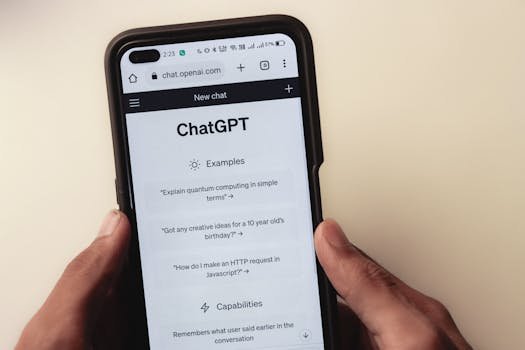
Enhancing Game AI with Advanced Dialogue Systems
Non-player characters (NPCs) are core to immersive gaming experiences. Their ability to interact naturally with players defines the depth of storytelling and engagement.
Table of Contents
Traditional dialogue trees rely on pre-scripted paths, often limiting player choice. Incorporating AI-driven methods overcomes these restrictions by enabling dynamic and context-aware conversations.
Understanding OpenAI Function Calling in Game Dialogue
OpenAI function calling allows AI models to interact with external functions during conversation. This enables NPCs to trigger specific game mechanics or retrieve dynamic data while maintaining coherent dialogue.
Function calling acts as an interface between the dialogue model and the game engine. It bridges natural language understanding with programmatic responses, making NPC interactions more fluid and responsive.
The Architecture of AI-Driven NPC Dialogue Trees
The architecture integrates the language model, function calling mechanism, and the game logic system. Each component plays a crucial role in processing player input and generating meaningful NPC responses.
The language model interprets player intent while function calls execute relevant game actions or fetch data. The game logic then updates the environment and NPC state accordingly, creating a feedback loop.
Component Breakdown
| Component | Role | Example Functionality |
|---|---|---|
| Language Model | Processes player inputs to generate dialogue | Recognizes questions, commands, or emotions |
| Function Calling API | Triggers game functions based on dialogue context | Fetches inventory status, triggers quests |
| Game Logic System | Applies game mechanics and updates states | Changes NPC mood, opens dialogue branches |
Designing Flexible Dialogue Flows with Function Calls
Function calling enables branching conversations that adapt to player choices dynamically. Unlike static trees, the dialogue can incorporate real-time data and game variables.
Developers define callable functions with parameters that the AI model invokes contextually. This flexibility creates diverse outcomes based on player interactions and game state.
Example: Dynamic Quest Assignment
When a player asks an NPC about available quests, the model can call a function like “getAvailableQuests()”. The function returns relevant quests based on the player’s progress and inventory.
The response generated includes specific quest details, tailored rewards, and follow-up dialogue options. This approach keeps the gameplay fresh and personalized.
Implementing Context Awareness in NPC Dialogues
Context awareness is crucial for believable NPC conversations. AI models leveraging function calling can maintain and update conversational context through game data.
For instance, NPCs remember prior player choices or previous dialogue threads. This memory influences current dialogue options and emotional tone, enhancing realism.
State Management Techniques
State management involves tracking variables like completed quests, player reputation, or relationship status. The dialogue system queries these states via function calls to tailor responses.
Efficient state updates ensure the NPC reacts appropriately to evolving scenarios. This dynamic behavior significantly improves player immersion.
Challenges and Solutions in AI-Driven Dialogue Integration
Integrating OpenAI function calling into NPC dialogue systems presents technical and design challenges. These include latency, ambiguous player input, and maintaining consistent narrative flow.
Addressing latency requires optimizing function call responses and caching commonly accessed data. Robust input parsing minimizes misunderstandings by clarifying ambiguous requests.
Ensuring Narrative Consistency
Dialogue systems must balance open-ended AI responses with story coherence. Developers implement constraints on function outputs and dialogue generation to preserve narrative integrity.
Combining AI creativity with predefined story arcs produces engaging yet controlled interactions. This hybrid approach maintains immersion without breaking the storyline.
Future Directions for AI-Enhanced NPC Systems
The future of NPC dialogue involves deeper integration of multimodal inputs and personalized player experiences. AI-driven systems may incorporate voice recognition, facial expressions, and emotional analysis.
Function calling will expand to interface with advanced game mechanics, procedural content, and real-time environment changes. These capabilities promise unprecedented levels of interactivity.
Adaptive Narratives and Player Profiling
AI systems can leverage player profiling to adjust NPC behavior and dialogue tone individually. This leads to unique story paths reflecting player preferences and style.
Adaptive narratives supported by function calls help create living worlds where NPCs evolve alongside players. This innovation will redefine engagement in future games.
Technical Implementation Guide
Setting Up the Language Model with Function Definitions
Developers define functions accessible to the AI model, specifying input parameters and expected outputs. These definitions allow the model to request external data or trigger actions seamlessly.
For example, a function “queryNPCMood()” might return the current emotional state of an NPC, influencing dialogue tone. Properly structured function schemas are essential for smooth integration.
Integrating with Game Engines
Function calling interfaces require middleware to connect the AI with the game engine. This middleware interprets model requests and executes corresponding game logic functions.
Popular engines like Unity or Unreal Engine can incorporate plugins or APIs to facilitate this communication. Ensuring low latency and error handling is critical.
Testing and Iteration
Extensive testing involves simulating various player inputs and monitoring NPC responses. Developers refine function parameters and dialogue prompts to minimize errors.
User feedback is invaluable for identifying unnatural dialogue or broken logic paths. Continuous iteration improves system robustness and player satisfaction.